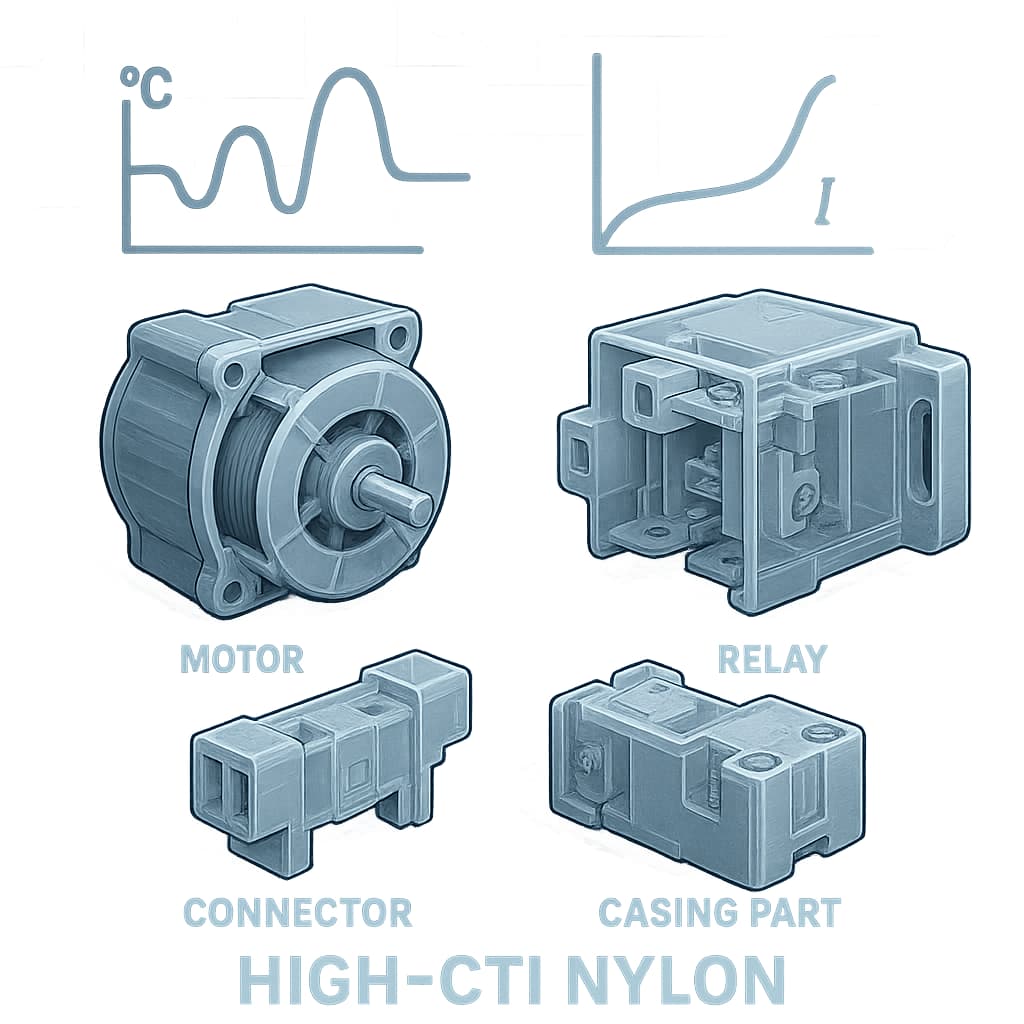In the home appliance industry, electrical insulation and thermal stability have always been central to material selection. As appliances move toward higher power density, compact design, and smarter functionality, traditional PA6 or PA66 resins no longer meet the insulation and thermal demands under high-voltage, long-duration operation. Thus, high-CTI and high-heat-resistant modified nylons have become the mainstream trend. High Comparative Tracking Index (CTI) nylon materials address the risks of tracking and dielectric breakdown, maintaining insulation performance even in humid, hot, and contaminated conditions.
A higher CTI value indicates better resistance to electrical tracking. Components such as motor housings, relay sockets, connectors, and switches are exposed to long-term electrical stress and local heating, leading to potential surface tracking when moisture or contamination is present. Standard PA66 offers a CTI below 400 V, while modified grades can achieve 600 V or higher, providing a safer margin for high-voltage applications. The enhancement of CTI is achieved by incorporating anti-tracking fillers, halogen-free flame retardants, and dispersion control technology, which collectively reduce surface conductivity and ion migration.
Thermal resistance is another key factor for appliance components operating near heat sources, such as coffee machines, air fryers, or power tool stator brackets. Standard nylons tend to lose strength and become brittle after prolonged thermal aging. To overcome this, aromatic structures, heat stabilizers, and reinforcement systems are integrated into the polymer chain. Common modification systems include PA66/PPA blends, PA6T copolymers, and high-crystallinity nylon matrices. These materials can reach heat deflection temperatures (HDT) above 240°C and glass transition temperatures (Tg) above 120°C while maintaining good mechanical and flow properties.
In terms of flame retardancy, high-CTI nylons typically meet the UL94 V-0 rating without using halogen-based systems. Modern formulations rely on phosphorus-based or nitrogen–phosphorus synergistic flame retardants, forming a stable char layer that blocks flame propagation and suppresses smoke generation. This ensures compliance with IEC 60335 and RoHS standards while maintaining consistent appearance and performance reliability.
From a processing perspective, high-CTI, heat-resistant nylons require balanced rheology. Their filled systems increase melt viscosity, so optimized molding conditions are needed: mold temperature between 90–110°C, extended holding pressure, and vacuum venting to prevent trapped gases. For thin-wall parts, PA66/PA6 blends or flow-enhanced formulations help maintain insulation with improved processability. A 30–35% glass fiber content is usually optimal for dimensional stability without sacrificing surface quality.
Future development will emphasize sustainability and smarter material design. Bio-based nylons like PA610 and PA1010 combined with halogen-free, high-CTI systems represent eco-friendly alternatives. As appliances continue to evolve toward higher energy density, materials must ensure enhanced insulation, longer thermal aging resistance, and stable dielectric properties, driving the use of high-Tg nylons and PPA copolymers. The ultimate goal is to achieve a “high safety, high heat resistance, low environmental impact” material solution.
